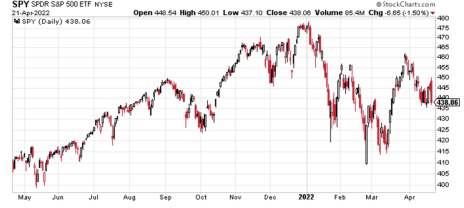Almost every day for several months, I’m asked, “how do I protect my profits using options?”
But the question has been rolling in far more frequently over the past few weeks, so I’m going to go over my favorite strategy, step-by-step, for protecting profits without giving up potential future returns.
I mean, it’s no surprise to me that protecting profits is a major concern for intelligent investors right now. So again, it doesn’t surprise me that the emails are piling in on how I protect profits.
Most investors simply buy puts to protect returns. Unfortunately, that’s one of the worst choices.
The Protective Collar Option Strategy
A far better alternative and one that most professionals prefer is an options strategy known as a collar. The strategy’s goal is to preserve hard-earned capital, while simultaneously allowing a position to continue making profits, albeit limited.
Unfortunately, greed deters investors from using collars. Hedge-funds and even, large institutional managers frequently use collars, so why aren’t most individual investors?
It’s because most investors don’t realize that collars not only protect their unrealized profits, they also allow you to hold a position that you don’t want to sell, but want some downside protection just in case the stock takes a fall. Think earnings surprise or if you own a stock that pays a healthy dividend that you want to keep holding. Or maybe investors don’t realize it is one of the cheapest, yet most effective ways to reduce risk.
It doesn’t really matter the reason, it only matters that you start using this strategy to keep risk in hand. Because the most important aspect to successful, long-term investing is a disciplined approach to risk-management. Without it, even the best strategies are inevitably doomed.
A collar is an options strategy that requires an investor, who already owns at least 100 shares of a stock, to purchase an out-of-the-money put option and sell an out-of-the-money call option.
Think about of it as a covered call coupled with a long put.
- Long Stock (at least 100 shares)
- Sell call option to finance the purchase of the protective put
- Buy put option to hedge downside risk
*Collar Option Strategy: long stock + out-of-the-money long put + out-of-the-money short call
That’s right, you read bullet point “3” correctly. You can actually finance most of your protection, so the cost of a collar is limited, if not free. Again, this is why intelligent investors and professional traders use collars habitually.
I’m going to use the heavily traded SPDR S&P 500 ETF (SPY) for my example.
Let’s say we own 100 shares of SPY and would like to protect our return going forward. We still want to hold the stock and participate in further upside. But we also realize that the stock has had an incredible run and want some downside protection, specifically over the short to intermediate-term.
The stock is currently trading for 438.06.
- With SPY currently trading for 438.06, we want to sell an out-of-the-money call as our first step in using a collar option strategy.
- I typically look for a call that has roughly 30-60 days left until expiration. So, to keep things simple, I am going with the June 17, 2022 options that are due to expire in 57 days.
I don’t want to sell calls that are too far out-of-the-money because I want to bring in a decent amount of premium to cover most, if not all, of the protective put I’m going to buy.
As a result, I try to sell a call with a delta somewhere around .20 to .45.. The SPY 445 June call option with a delta of 0.42 fits the bill. We can sell the 455 call option in June for $9.90, or $990 per call. We can now use the $990 from the call sold to help finance the put contract needed to achieve our goal of protecting returns.
- The next and final step is to find an appropriate protective put to purchase. There are many different ways to approach this step, mostly centered around which expiration cycle to use. Should we go out 30 days in expiration? 60 days? 120 days? It really is up to you to decide.
I prefer to going out as far as I can without paying too much for my protective put.
I’m going to go out to the August expiration cycle with 120 days left until expiration. I plan on buying the 400 puts for roughly $10.65, or $1,065 per put contract.
This means that almost the entire cost of the August 400 puts will be covered by selling the June 445 calls.
Total Cost: August 400 puts ($1,065) – June 445 calls ($990) = $75 debit
And, we can actually add to our return, by selling more calls in July and August while still maintaining protection through August.
- So, as it stands our upside return is limited to 445 over the next 57 days. If SPY pushes above 445 per share, at June expiration, our stock would be called away. Basically, you would lock in any capital gains up to the price of 445. With SPY currently trading for roughly 438, you would tack an additional $7, or 1.6% to your overall return.
But the key reason to use the strategy is not about making additional returns, it’s about protecting profits. And through using a collar option strategy, in this instance, you are protected if SPY falls below 400 (where we purchased our put option). Essentially, you would only give up 8.7% of your overall returns and insure your position against a sharp pullback.
Collars limit your risk at an incredibly low cost and allow you to participate in further, albeit limited, upside profit potential. I’m certain you won’t regret adding this easy, yet effective options strategy to your investment toolbelt.
Again, if you have any questions, please feel free to email me or post your question in the comments section below. And don’t forget to sign up for my Free Weekly Newsletter for weekly education, research and trade ideas.




